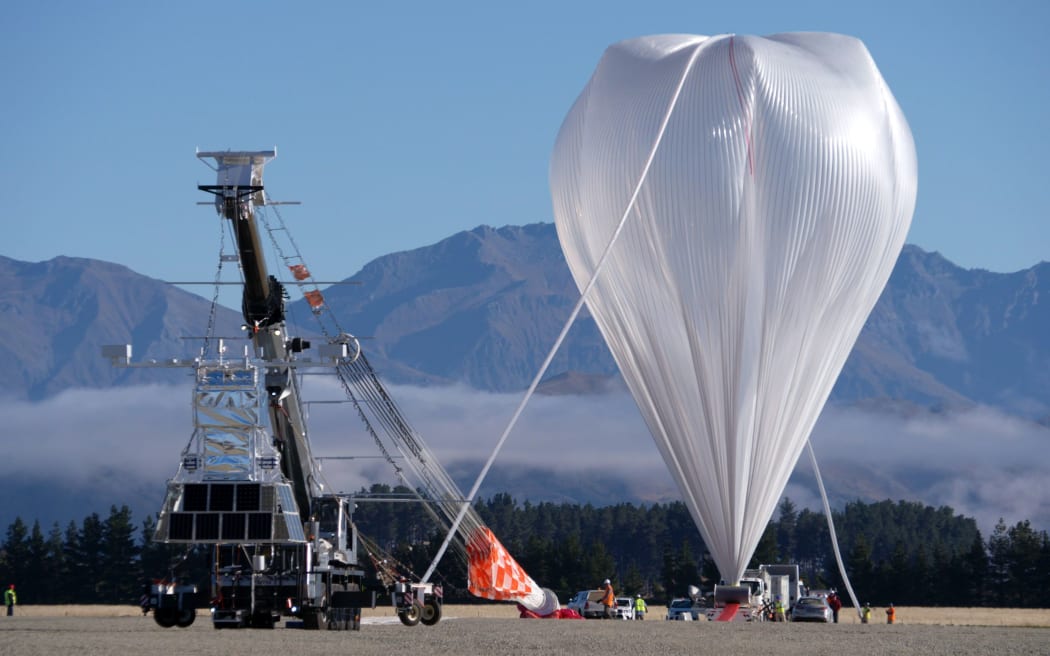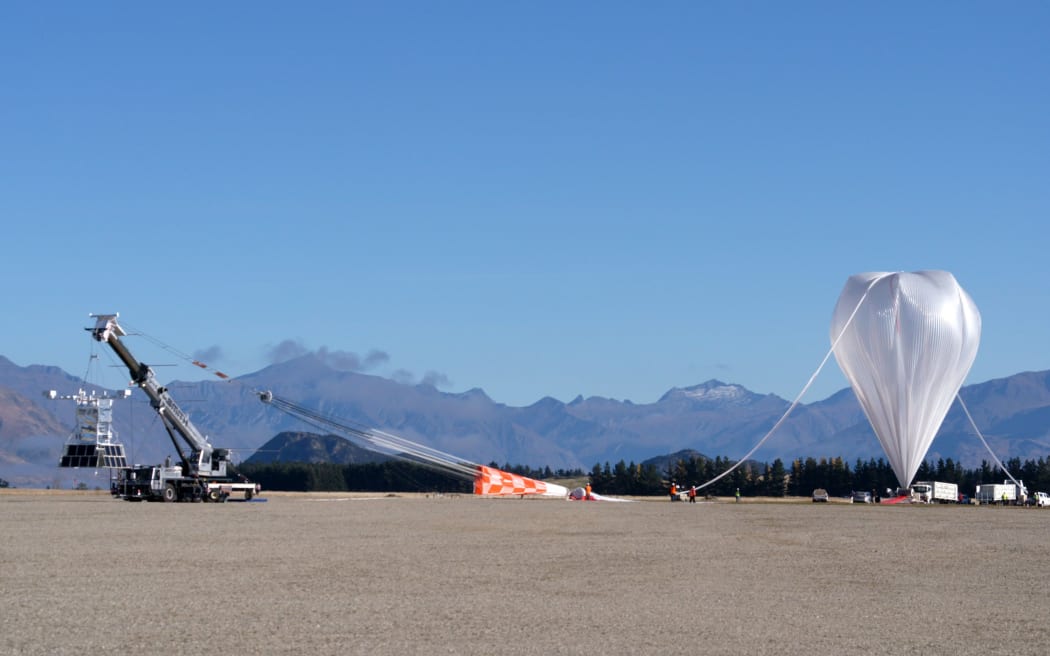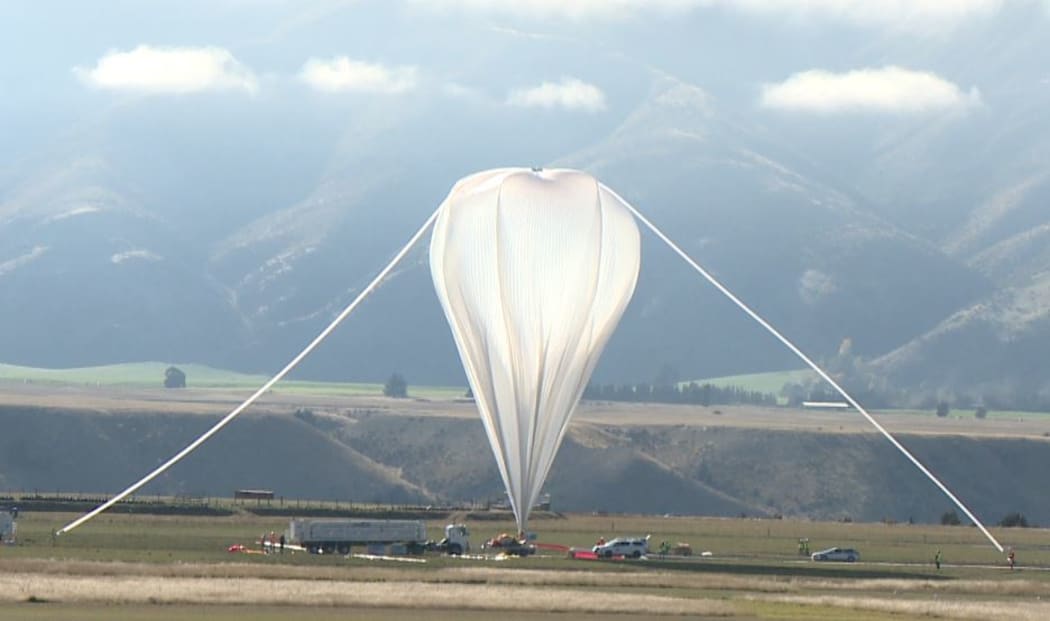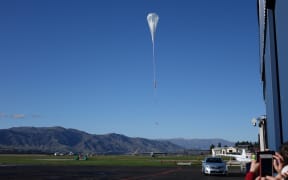Nasa staff had all their fingers and toes crossed as they hoped for eighth time lucky for their balloon launch at Wanaka airport this morning.

Nasa's football-stadium-sized, heavy-lift super pressure balloon prepares to take to the skies over Wanaka. Photo: NASA
The airport was closed in preparation for the launch, which was finally successful after multiple false starts.
The lift-off of the super pressure balloon has been deferred seven times in the past two weeks but was launched just after 10am on a clear day in Wanaka with light winds.
The agency wants to test the technology for long-duration flights at mid-latitudes, as long-haul balloon flights become a cheaper tool for the study of the near-space environment.
The balloon was taken out of its box at about 8am, with inflation taking about two hours.
Just before 10am, a smaller tow balloon that had been holding the main balloon off the ground was deliberately detached, and the main balloon was launched about an hour later.
The chief of the Nasa balloon programme, Debbie Fairbrother, said there were a few hiccups in the lead-up to the launch.
But the balloon was in the air and scientists were monitoring its progress.
The balloon would head north-east, before floating off the coast of the South Island, towards South America.
According to this flight tracker website the balloon is currently at an altitude of 108,800 feet and is moving towards Christchurch at about 20km/h.
Retired MetService meteorologist Steve Rawdon said that if it was a clear evening Christchurch residents would be able to see the balloon as a glint in the sky as the sun went down.

The balloon's objective is to detect ultra-high energy cosmic rays from beyond our galaxy as they penetrate the Earth’s atmosphere. Photo: Nasa
As well as testing the balloon technology and its endurance, the mission would also be monitoring how cosmic rays interacted with the atmosphere.
Ms Fairbrother said the balloon would be in the air for about 100 days and in that time it was expected to go around the world two or three times.
"It really depends on mother nature and if we caught in some of these eddies or we just hang out over the ocean for a little while. It's kind of a mystery exactly where we'll go," she said.
When the mission ended, Ms Fairbrother said they would hopefully bring the balloon down on land.
"We've got several different countries that we can terminate over, so we'll be watching every time we come across a land mass, is it the right time to terminate, or let the flight continue?
"Towards the end of two or three months, the winds are going to become a little less stable and if they start heading further north, we have some population issues, because safety doesn't want us to fly over high populations.
"The 2015 flight we terminated over Australia, and the 2016 flight we terminated over Peru. We'll terminate wherever we can."
Ms Fairbrother said they had the ability to remotely separate the balloon and the parachute, and then the parachute would bring the payload down safely. The balloon would freefall and Nasa would go and collect them.

The balloon took about two hours to fully inflate before it was launched. Photo: Screenshot / NASA
Wanaka Airport spokesperson Caroline Dumas said the balloon had another small piece of cargo on board - an Anzac poppy.
The same thing was done last year when Nasa launched its first balloon from the airport.
"We thought it was something nice," Ms Dumas said.
"It's especially poignant this year because it's Anzac Day."
Local residents and visitors were able to watch the balloon as it began its journey, from vantage points around Wanaka.
The volume of the balloon is more than half a million cubic metres, and it will float 34km above the earth.


